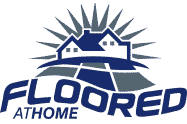Dustless
Dustless Sanding/Dust Containment
The question of dustless sanding comes up on almost every job, and it makes sense why. The difference between a company that takes the steps to do this properly and one that doesn’t is huge. Having substantial dust after a project not only takes hours to clean but is also unhealthy to you and your family, and it also takes away from the initial enjoyment of the project.
We take the following steps to ensure that dust is managed throughout the entire process from start to finish.
Sanding Equipment
All of the sanding equipment we use is state of the art and goes through daily cleaning and monthly checks. Some manufacturers have done an amazing job lately in improving their vacuuming capabilities, and this is a huge part of why we choose the machines we do. Additionally, it’s important to use the machines properly. Even the best machine without the proper maintenance or a properly positioned dust-skirt at the bottom will not effectively keep the dust from getting into the house. This process alone gets us to about 95% dust free.
Vacuuming and Tacking
It is extremely critical throughout the process to be vacuuming the floors. Larger pieces if left between sanding grits can leave scratches in the floor and the fine dust becomes lodged into the pores of the wood and between the gaps in the boards. This must be removed between sanding passes and before any product is applied to the floor. Dry tacking the floor is just as important, if not more so than vacuuming, and ensures that each of the products applied will properly adhere to the floor creating the longest lasting protection and best looking finish possible. Vacuuming and tacking are a standard process on all jobs and get us to about 98% dustless.
Tarping
Just as in painting, the preparation is crucial to a project being done well. We tarp off the areas we are working in for peace of mind. Nobody wants to find dust in their kitchens, on their countertops, or on their dishes. Before a job starts we will strategically tarp off the areas we are working in, and also anything connected to the HVAC system. Worse than finding dust in the house after a project is dust that gets trapped in the vents and is noticeable for months after. Tarping is a process we implement on every job, and contains any remaining dust to the project areas.
Dust Containment System
For any of our customers who are still not convinced, we have brand new Bona DCS 2.0 machines that we can use for our jobs. For just a few specs on this machine, it cycles through 235 CFM (cubic feet per minute) of air, has a 2-step cyclonic intake system and 2 hospital-grade HEPA filters, and is GREENGUARD certified for indoor air quality. Using the DCS system get us to 99%+ dust free.

